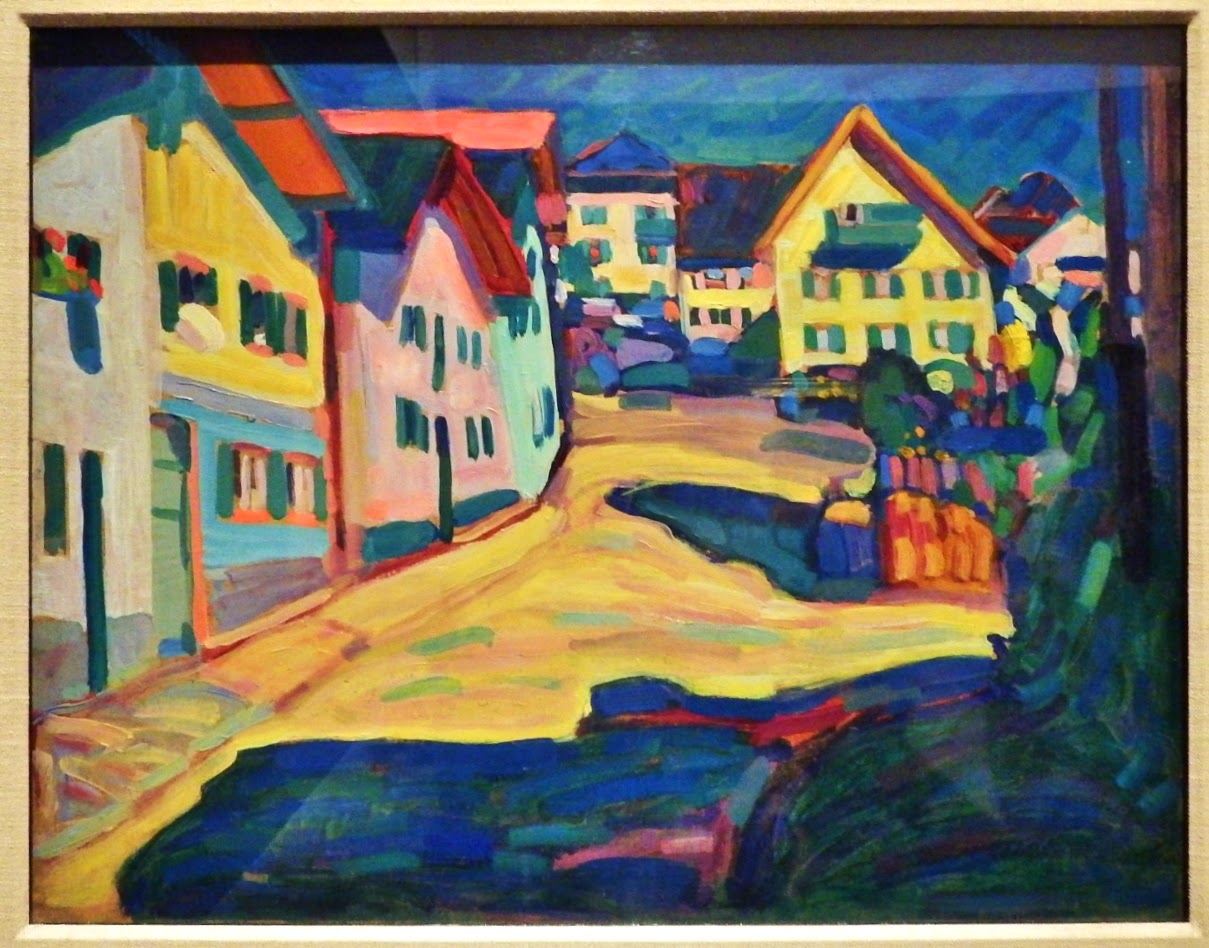We are parked up on a bluff and our neighbors are mostly foreign in rented RVs. As a matter of fact, almost everywhere we have been on this trip, we have been surrounded by foreign visitors in RVs. When you are an artist, you are always prepared for the beach. Notice Allan sitting underneath the plein air umbrellas. This photo is taken right across the street from where we are staying.
Because it was a week day, we had the beach to ourselves for a couple of hours but the drawback was there were no dogs allowed on any L.A County Beach. So we had to drive north about 10 miles to cross the county line into Ventura County to take the dogs on another day. Elsie especially loves the beach and she dug a huge hole in the sand, heading for China and then got down into the hole and laid on her back with her legs sticking up. By the time Allan got the camera out and stood up to get her photo, she was out of her hole and ready for a walk.
On Saturday we went to LACMA (Los Angeles County Museum of Art) to their special exhibition of EXPRESSIONISM: VAN GOGH TO KADINSKY.
 |
| Restaurant of the Siren at Asnieres, 1887 Vincent Van Gogh |
 |
| The House of Pan-Du, 1890 Paul Gauguin |
There were many artists who were trying to find an alternative to impressionism with its emphasis on accidental natural impressions of light.
 |
| Paul Signac - Color Lithograph of the Chromatic Circle 1888 |
Although Van Gogh was dead for 15 years when his paintings were in a show in Germany, his vivacious brushstrokes were instrumental in sending the German artists in search of a new way to express their art.
 |
| Henri Matisse, Studio Interior, 1904 |
 |
| Murvau, Burggrabenstrasse 1, 1908 Wassily Kadinsky |
 |
| Still Life with Apples, 1894 Paul Cezanne |
Although we have been reading about art for years and knowing the artists we favored, it was a real revelation to see this exhibit which closely examines the transition from Impressionism to Cubism. As I said earlier, it was exceptional. Many of the paintings that I would have liked to photograph for you to see here in the blog, had the No Photograph Symbol next to the painting. But if you are interested in seeing all of the paintings in the exhibit and cannot get to Los Angeles, they have printed a book of the exhibition called Expressionism in Germany and France. This book has colorplates of all the paintings and prints in the exhibit, plus other smaller color plates which are used as examples of their thesis.




No comments:
Post a Comment